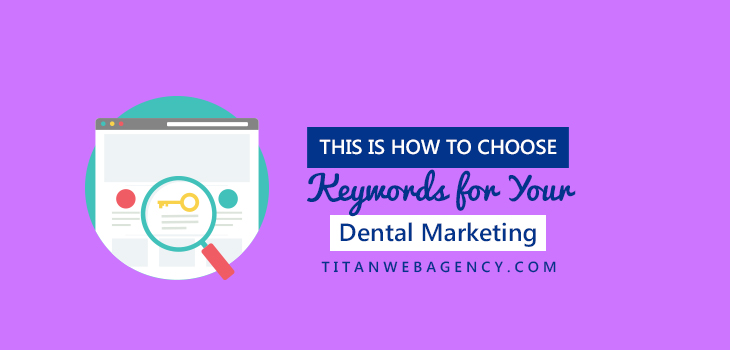Best Dental Website Design: 10 Examples and Key Qualities of the Best Dental Websites

This post was originally published January 9, 2017, and was extensively updated on May 16, 2024
Your dental practice website is your online headquarters. It’s the first thing prospective patients will see when they click through to your
site on Google or social media. Their first impression will influence everything they do after they reach your site. It’s also the hub for all your dental marketing activities.
The key is to ensure your dental website design is spot-on. It should capture the essence of the top dental websites and do an amazing job of showcasing you, your skills, and your team.
In this post, we’ll share 10 examples of customized dental websites and outline the key qualities that make them stand out from their competitors.
Why is a Dentist's Website an Important Marketing Tool?
Let's start by discussing why having a great dental website is essential for your practice. It shouldn’t be an afterthought.
Your dental practice website is central to your online activities. Dentists’ websites are often the first place potential patients visit. If your website doesn't feature an accessibility menu, dental patient reviews, testimonials, clear explanations of the services you provide, and bios of your team, you risk visitors navigating away before making an appointment.
All things being equal, dental practices with great websites receive more traffic than those with poor ones, as a well-designed site incorporates meticulous search engine optimization to help visitors easily find it. Most people use Google to find service providers, and a well-optimized site is far more likely to earn a spot near the top of Google’s search results than one that has been neglected.
More traffic often means more appointment requests, so having the right system in place is essential. Check out our review of the best scheduling software for dental offices to find the perfect tool for managing your growing patient flow.
Finally, a well-designed and easy-to-use website will help you stay ahead of your competitors and even give you a competitive edge if their outdated sites need updating.
In other words, your website design isn’t just important. It’s a key element of your branding and marketing that you can’t overlook. That’s why we recommend working with a dental marketing professional who understands the design elements of an effective dental website and how the right dental patient communication software can help create a consistent, modern patient experience.
Examples of Websites for Dentists and Their Key Design Qualities
In this post, we will provide ten examples of dentists doing things right when it comes to website design for dentists. We'll review what they are doing, how they implement it, and why it's good. Let's go.
#1: Finn Hill Dental
The first quality your dental website needs is a clean and organized interface. You don’t want cluttered graphics that make it difficult for visitors to find what they want. It should be easy to navigate.
Finn Hill Dental’s website layout is tidy and organized. While they have a separate page for their dental services, the links on their homepage make it easy for each visitor to find exactly what they need.
Whether a visitor to the site is looking for a routine cleaning, whitening procedure, or emergency treatment, they can get to the relevant information with just one click.
#2: Kirkland Family Dentistry
In addition to simple and intuitive navigation, your website must be comprehensive in the information it provides. Today’s dental patients are web-savvy, and they expect to find and easily locate information. You’ll need to make sure you include expected, essential pages, such as:
- About Us
- Services
- Contact Us
- Locations
- New Patient Forms
- Insurance Information
An example from Kirkland Family Dentistry illustrates how key pages can help new visitors find what they want.
You’ll notice that their 'About Us' menu includes general information, as well as bios for each dentist on the team. Scrolling down the home page provides quick links to each service page. Any prospective patient visiting this site can easily find what they need, as it’s all readily accessible from the homepage.
#3: Signature Dental
Patient convenience and accessibility should be a priority for every dental practice website. Remember that some patients may need accessibility features to read, hear, or click on relevant links. On a related note, you can boost patient convenience by including a comprehensive FAQ page that addresses common questions, which also supports how GEO improves dental visibility by giving AI systems clear, structured answers to surface.
Signature Dental in Frisco, Texas, is a good example of this. Their contact page includes separate information for the practice’s two locations, as well as a thorough and helpful FAQ page.
Signature Dental's FAQ page layout is clean. There’s no need to click through for detailed responses to questions, as the information is all readily available. This website’s sleek design and comprehensive nature streamline the patient journey, underscoring Signature Dental’s commitment to excellent customer service and local presence.
#4: Discovery Children's Dentistry & Orthodontics
Your website's ultimate job is to represent your practice online and encourage new patients to schedule appointments. That means you’ll need to ensure your website is optimized to maximize conversion rates.
To convert visitors into paying patients, your website should possess the qualities we’ve discussed, including a clean design, easy navigation, and user-friendly features. It should also have a strategically placed call to action to catch visitors’ attention. Here’s an example from Discovery Children's Dentistry & Orthodontics.

Notice the clear contrast and complementary colors, as well as the eye-catching nature of the call-to-action. This Carlsbad pediatric dentist did a great job with this. We love this design for its simplicity and the ease with which visitors can book an appointment.
#5: Kennewick Dental
If you want visitors to your website to trust you with their smiles, you’ll need to be strategic about using visuals to build trust. Many practices utilize before-and-after photos and patient testimonials to illustrate the quality of care.
Potential patients will feel far more comfortable booking an appointment with you if they can see proof that you’re a caring dentist with happy patients. Here’s an example of effectively using before-and-after photos from the Kennewick Dental website, which features a Smile Gallery showcasing their amazing work.
What we like about this website is that it has taken the time to share anonymous before-and-after photos with descriptions of its work to improve its patients' teeth.
#6: New Haven Dental Group
Dentistry has long utilized technology to treat patients, but in our modern era, the technology is evolving rapidly. Patients want to know that their dentists are keeping up with new technology that will make their dental visits more comfortable, resulting in less time in the chair and more precise work. That means you’ll need to show your patients you’re not stuck in the past.
An example we like comes from New Haven Dental Group, a dental practice that advertises itself as tech-forward. They have a special section under the "About Us" menu on their homepage, where patients can click to read about the technology they use.
The practice's sleek and professional website design reflects its dedication to using the latest technology. The website makes it easy for patients to learn about the technology they use, allowing them to make informed decisions about choosing New Haven Dental Group.
#7: Tend
Videos are popular with web users for a reason. They offer an entertaining and low-effort way to learn about businesses, including healthcare providers such as dentists. That’s why we recommend using videos on your dental practice website.
Here’s an example from Tend, a multi-location practice with an innovative and user-friendly website.
This video is fun and engaging. In just 14 seconds, it introduces website visitors to this practice’s unique approach to dental care.
#8: Austin Oral Surgery
The best dentists don’t just clean and treat their patients’ teeth; they also provide comprehensive care. They share a passion for educating patients about good oral hygiene and providing them with a range of resources to help them care for their smiles to the best of their ability.
A case in point is the Austin Oral Surgery website, which has a section dedicated to patient education. It includes blog articles, videos, and (as noted above) a strong FAQ page.
Each article contains useful information. For example, the article about TMJ provides information about symptoms, treatments, and answers to commonly asked questions. This practice utilizes creative visuals and compelling copy to engage users and educate them about oral health.
#9: Atlanta Dental Spa
Your website should have compelling headings and subheadings to welcome visitors. Incorporating video into your heading will engage people and improve your conversion rate. While we’ve already mentioned videos, using them right at the top of your homepage is impactful and provides a strong first impression for visitors.
Check out this example from Atlanta Dental Spa, which uses a video that plays automatically behind its headers.
Without having to search, new visitors to this dental website get an immediate introduction that highlights the practice’s motto of “Better life through better dentistry.” Visitors can click the play button to see the full video with a brief tour of the dental spa and an explanation of its services.
#10: Zen Dental Studio
One of the biggest obstacles to people who require dental care is a lack of insurance and/or payment options. The best dental practice websites make it easy for visitors to determine whether you accept their insurance and how they can make a payment. Here’s an example of a website from Zen Dental Studio that does a great job of providing visitors with the necessary payment and insurance information.
You can see that they’ve included a “Patients” tab on their main menu that allows patients to read about insurance options and membership plans and view their FAQ. We also like that they’ve included “Book Now” and “Call Now” buttons to encourage visitors to contact them and book an appointment, as well as reminders to minimize cancellations and no-shows.
Where Does Your Dental Website Stand?
How can you tell where your dental website stands? Here are a few questions to ask yourself to decide if it’s time for an update.
- How long has it been since you’ve updated your website? If the answer is measured in years, you’re overdue for a revamp. Even if it has been shorter, if your website looks dated or is missing key information, you should consider updating it.
- Is your website mobile-ready? People are far more likely to search for dentists on a mobile device than on a computer. So, updating your site is essential if mobile users aren’t getting the same experience as people who access your site on a laptop.
- Is your content old and dated? Google’s algorithm can prioritize newer content when appropriate, so if your site has outdated information, it may be worth updating it to bring it up to par. It is also helpful to understand how to improve dental practice visibility in AI results so your updates support both search performance and patient engagement. And remember, this is not about constantly chasing fresh content. For dentists, that usually does not matter. But if you have a picture of your hygienist from five hygienists ago, that is the kind of update that becomes important.
- Is your website optimized for voice search? Many of your prospective patients will use digital assistants like Siri or Alexa to find a dentist when they need to make an appointment. Optimizing for voice search by using questions as headers can significantly enhance your site's visibility.
- Is your website doing what it should to build trust and authority? Your website should include before-and-after photos, testimonials, membership information, and awards to demonstrate to patients that they can trust you to provide excellent care. This approach can also help you get more dental referrals and grow your practice.
- Does it look dated? If your site uses outdated fonts, colors, and a design that is obviously from the early 2000s, you should consider investing in an update to bring your design up to current best practices and provide people with the experience they want and expect. You may not think this, but people will: "If he can't invest in something as simple as a website, where else is he skipping corners?"
Frequently Asked Questions About Building A Dental Website
How important is mobile compatibility for dentist websites?
Mobile compatibility is critical for dentist websites. More than half of all searches happen on mobile devices, so providing a great mobile experience for visitors to your website is essential. A mobile-responsive design ensures that all patients, regardless of which device they use to visit your website, will have a good experience.
How can I optimize my dentist's website for search engines?
Website optimization requires knowledge and expertise. While keywords remain important, several other factors must also be considered. A properly optimized website includes clean navigation, internal links, external links to referenced sites, schema markup, and more. Your best bet is to partner with a digital marketing agency specializing in SEO for dental websites.
How do I ensure my website complies with privacy and security regulations?
Privacy and security are essential for any dental practice website. Patients rely on their healthcare providers, including dentists, to keep their personal health information private and safe from hackers. You can take multiple steps behind the scenes to secure your website, including installing an SSL certificate, utilizing multi-factor authentication for users, creating off-site data backups, and conducting regular audits. You will also want to ensure your website has a privacy policy and is ADA-accessible.
How often should I update my website?
As often as you need to. You don’t need to worry about updating your website to have ‘fresh content’ for Google. Google prefers ‘fresh content’ when the query involves a time-sensitive answer.
Example: best dentist in Seattle
Time sensitive? Not really. Will updating your website frequently help? No.
Example: best electronic toothbrushes of 2024
Time sensitive? Yes. Will updating your website frequently help? Perhaps. What would help is having an article on your website that was written fairly recently and discusses the best electronic toothbrushes of 2024.
Should I have patient testimonials or reviews on my website?
Patient testimonials are an excellent way of providing 'social proof' to potential patients. They help reassure potential patients that they can trust you with their teeth. Testimonials may not carry the same weight as reviews, but they allow dentists to share patient experiences and treatment details.
Does my website design impact how patients perceive my practice?
Your overall website experience (both design and user experience) can and will impact how patients perceive your practice. Making a strong first impression is a must. First-time visitors are likely to click the dreaded back button if a website appears dated, is slow to load, or is not mobile-friendly. Keeping your web design modern, user-friendly, and appealing is one of the best ways to improve your conversion rate and attract new patients.
How much does a website for dental practices cost?
Most dentists will be fine with a customized, templated website. That’s what we build for our clients. What does this mean? We start with a template or framework and customize it based on design trends, user experience best practices, SEO best practices, your preferences, the industry, the local market, and more.
Our websites start at $3,999 and go up to $5,999 (Depending on how many pages you need on your website).
You can view examples of these websites by visiting our portfolio.
Other companies will charge $100-$300 per month, essentially leasing a stock website. This is the business model of many large dental marketing companies. These are basically site rentals. Once you cancel with them, you lose your website. You’ll likely have the same website as dozens or hundreds of other dental practices, likely with the same content as well, just with your specific information (name/location) edited in.
Finally, the last option is to create a completely custom website. This typically begins with a wireframe, followed by a custom design tailored exclusively to you. Fully custom sites take longer and cost more money. Typically, you’ll pay $8k-$20k+ for a fully custom site. In most instances, a customized, templated website wouldn’t be just as good.
Examples of fully custom websites from above include Tend, Zen Dental Studio, and Austin Oral Surgery.
Conclusion
Your website should reflect your practice and its mission. New and current patients should be able to find the information they need to feel comfortable trusting you with their smiles. The 10 website examples we’ve included here can help you update your site to provide patients with the best possible experience.
Do you need help updating your dental practice website to enhance the patient experience? Titan Web Agency is here to help!
Does your website need a refresh?
Schedule a FREE consultation!
Let's help your dental practice attract put its best foot forward with a beautiful and Google loving website — no pressure, just results...
Tyson Downs is the founder of Titan Web Agency, a company specializing in marketing for dental professionals. With an impressive track record of working with over 100 dental practices, Tyson has a deep understanding of the unique marketing needs within the dental industry.










.png)
.png)


